Despite the explosive growth of online retail in the United States, food sales account for only 1.6% of all online sales, according to the research of IGD. For comparison, in South Korea, Japan and the UK, online product sales account for 8.3%, 7.1%, and 6% of all digital sales, respectively.
Millennials are the priority audience for food delivery services as they spend most of their budget on ready-to-eat meals compared to other generations. Generation Y with their dynamic lives are more likely to eat in fast food restaurants and order food delivery. A report from Technomic Generational says that 3 out of 5 millennials order food delivery or get takeout from restaurants.
Roughly 55% of online food shoppers in the US are between the ages of 25 and 34. In the age group from 35 to 44 years old, 45% of the respondents buy food online, while in the group from 45 to 55 years old — about 35% of the respondents do so.
However, millennials have higher demands as their purchasing power grows: easy order, fast shipping, one-step checkout, loyalty programs, gamification, and more. We’ve rounded up 7 key drivers that could dramatically change the future of the grocery and ready-to-eat delivery industry this year — from new delivery channels and formats to sustainability programs that are becoming popular with an increasing number of consumers.
Marketing opportunities
Offline-marketing
Grocery delivery services use a wide range of online marketing tools to promote themselves. Additionally, tools of classic offline leaflets, posters, and leflets are also effective in this sector.
The Fridge No More darkstore, which operates in two boroughs in Brooklyn, New York, promising 15 minutes customer delivery, has heavily used advertisements on doorknobs and flyers in mailboxes.
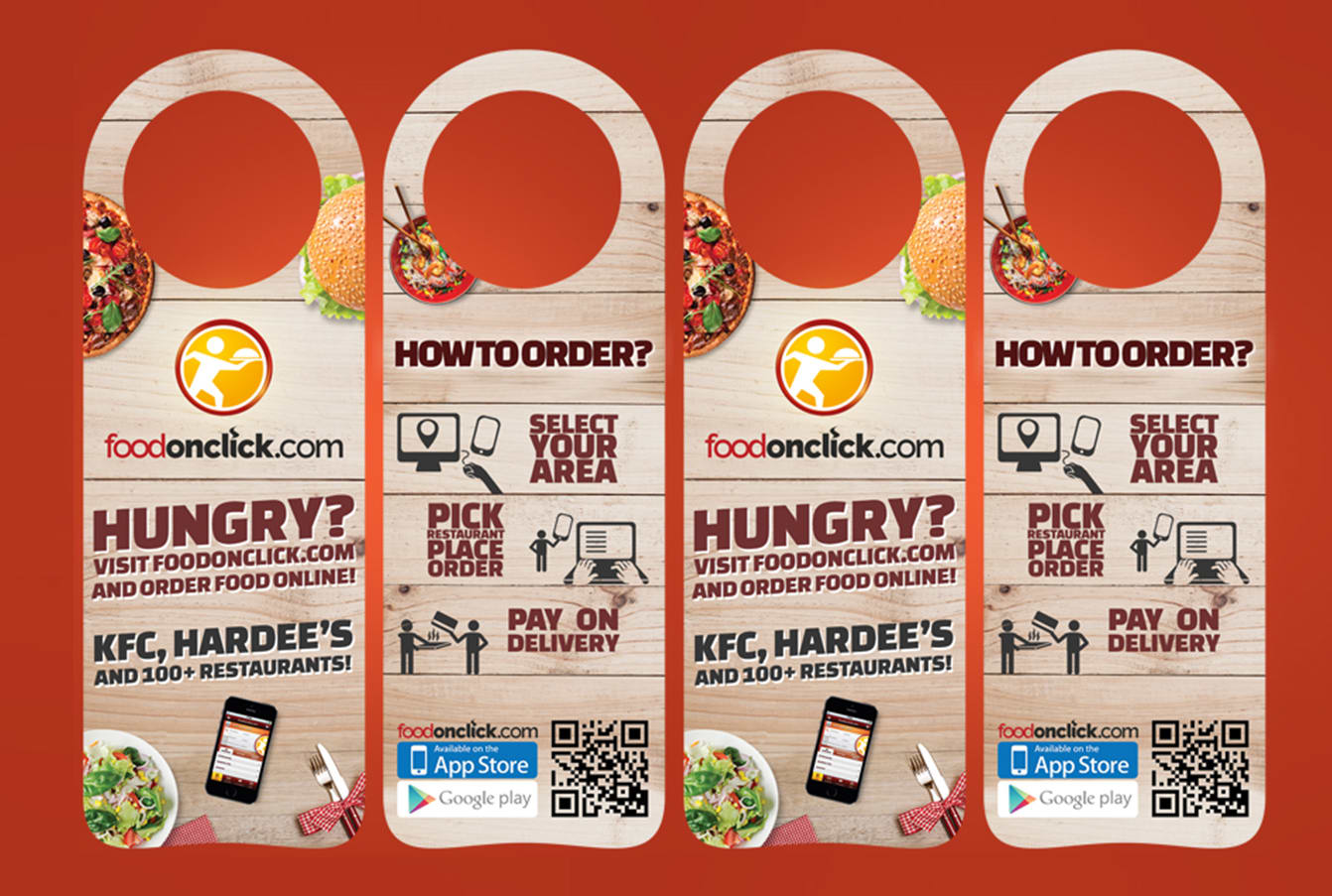
The courier bringing orders can easily place door hangers on the neighbors’ door with an offer at a special price and a QR code to the application or to the website. It turned out to work effectively in addition to online tools in the form of media bloggers and social networks.
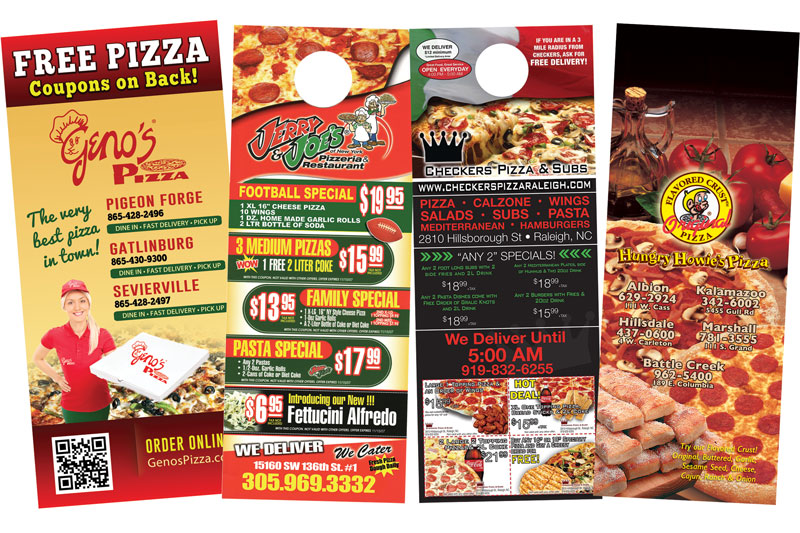
Offers on door hangers can be different: a tear-off coupon, discount rates, offers of the month, or just an advertisement for a product that is more profitable to sell in the near future.
QR code
Since client most often holds their phones in their hands, the faster system for connecting the buyer and the store will be through a QR code. For example, CINNAMONSHACK uses a special sticker on the packaging bag, which provides an opportunity to get a discount, view the entire menu or gain bonus points. 
Augmented and virtual reality
Augmented reality (AR) and virtual reality (VR) have become magic wands for attracting new customers to many food delivery services. Companies are using AR to update their marketing campaigns, increase brand awareness, sales, and even provide virtual training for their employees.
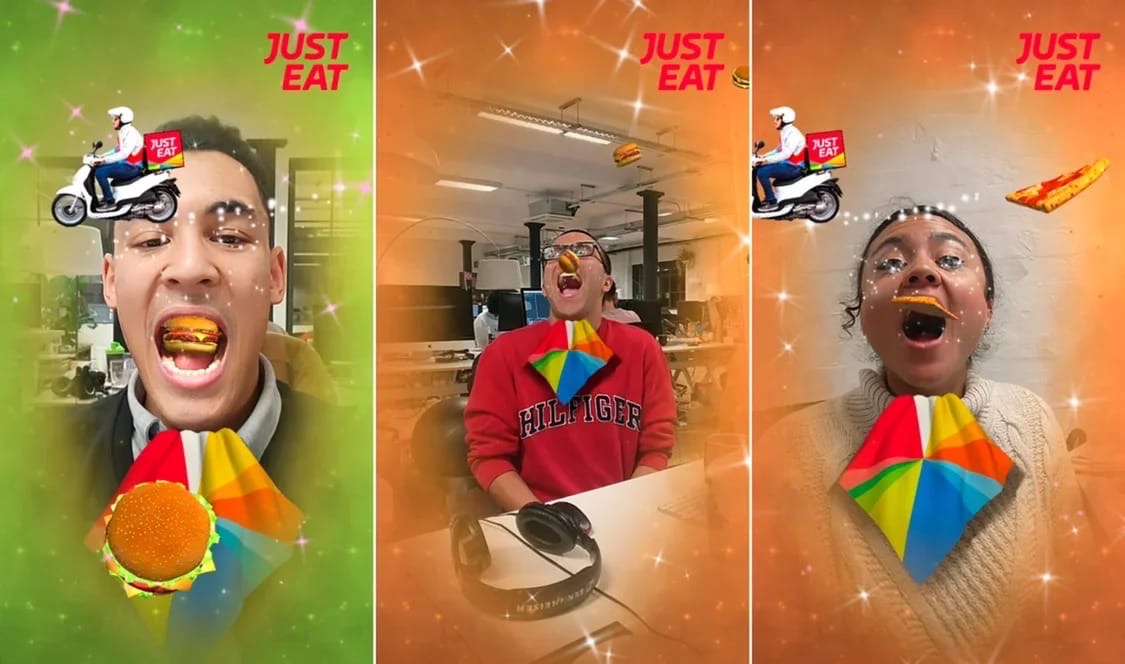
Just Eat launched augmented reality feature to promote food offerings in a new and fun way. This feature was available via Facebook Messenger — customers could use their cameras to see burgers, pizza, and other foods floating in their mouths.
The campaign garnered over 100,000 interactions, 10% of which resulted in orders.
Collaborations with influencers 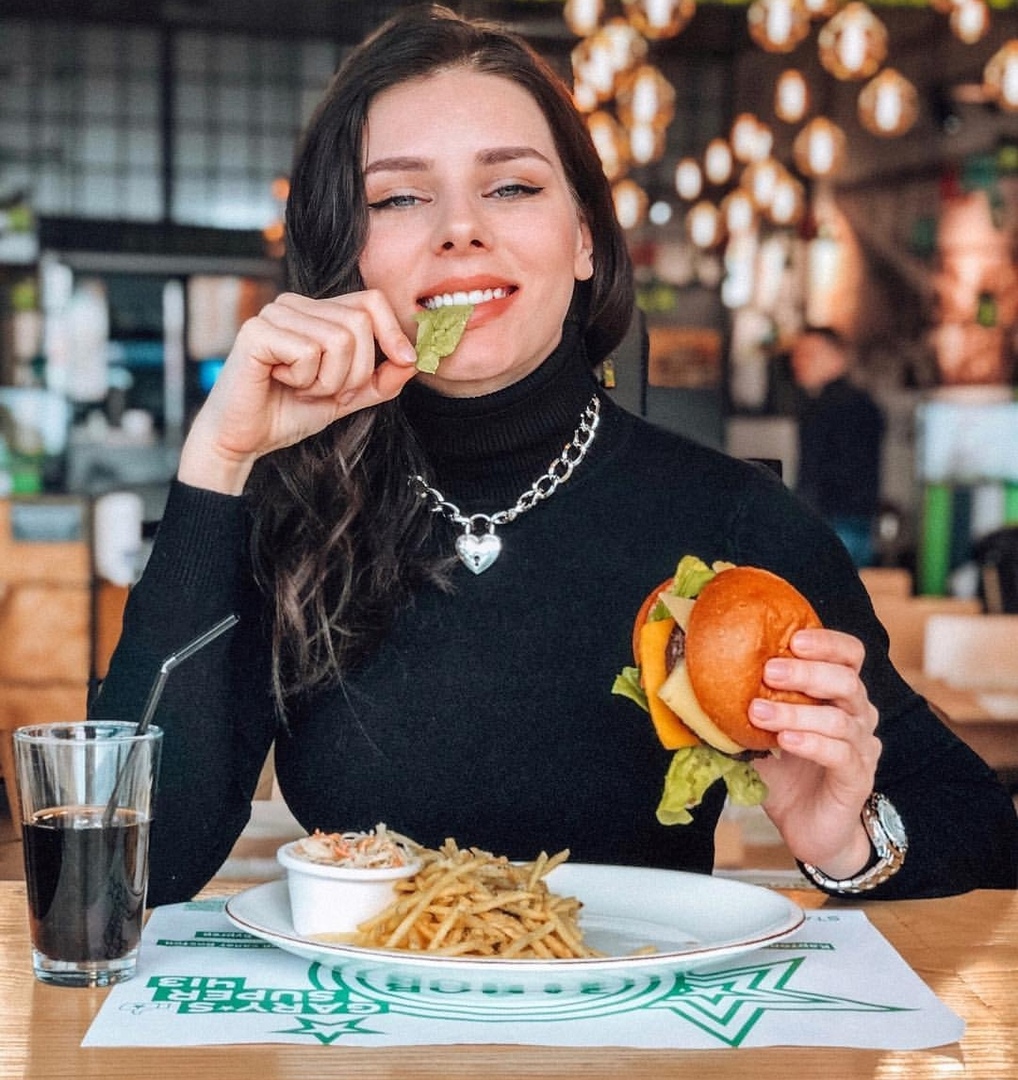
Efood was challenged with developing a strategy to reach a specific audience between the ages of 18 and 44 and retain consumers. To achieve these goals, the brand has partnered with popular Greek influencers on YouTube to create e-product videos for the YouTube channel with a focus on entertainment, fun and educational topics. As part of its own video strategy, efood also releases 4-5 of its own videos per week. This approach has helped efood become the largest branded channel in Greece, increasing orders to 100,000 per month.
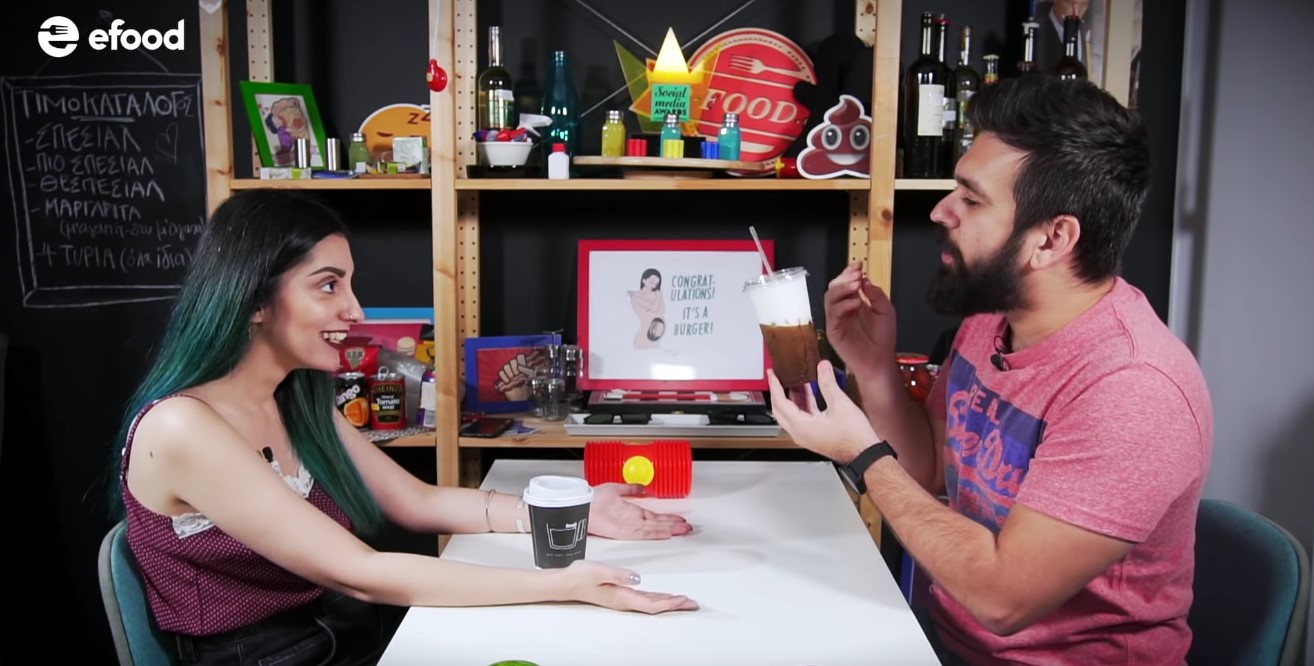
Analytics
Big data analytics is helping to revolutionize food delivery services and make them as efficient as possible. Food providers collect and analyze a huge amount of data, such as:
- customer purchase history
- products that are currently in the basket
- reviews and comments on social networks
- posts clients’ publications on social networks
- the effect of market trends on inventory consumption
- road traffic
- the effect of temperature on food and much more
This information helps food delivery companies accurately estimate delivery times, track customer emotions on social media and respond immediately to complaints, personalize food offerings, and more.
Grubhub, for example, analyzes data from millions of orders to come up with the best nutritional recommendations for each customer. Doordash uses big data to manage inventory and predict the number of couriers needed on a specific day, the expected demand for a specific cuisine, and time for meal preparation.
Just Eat examines hundreds of thousands of customer records to understand what customers want from their services – when, how often, and what type of food they are going order. Big data has contributed to the company’s 50% growth in the UK market.
In April 2019, McDonalds spent $300 million to acquire a big data startup. This multibillion-dollar conglomerate figured that the best way to stay ahead of the competition was to measure, analyze, and improve its performance.
B2b Partnership
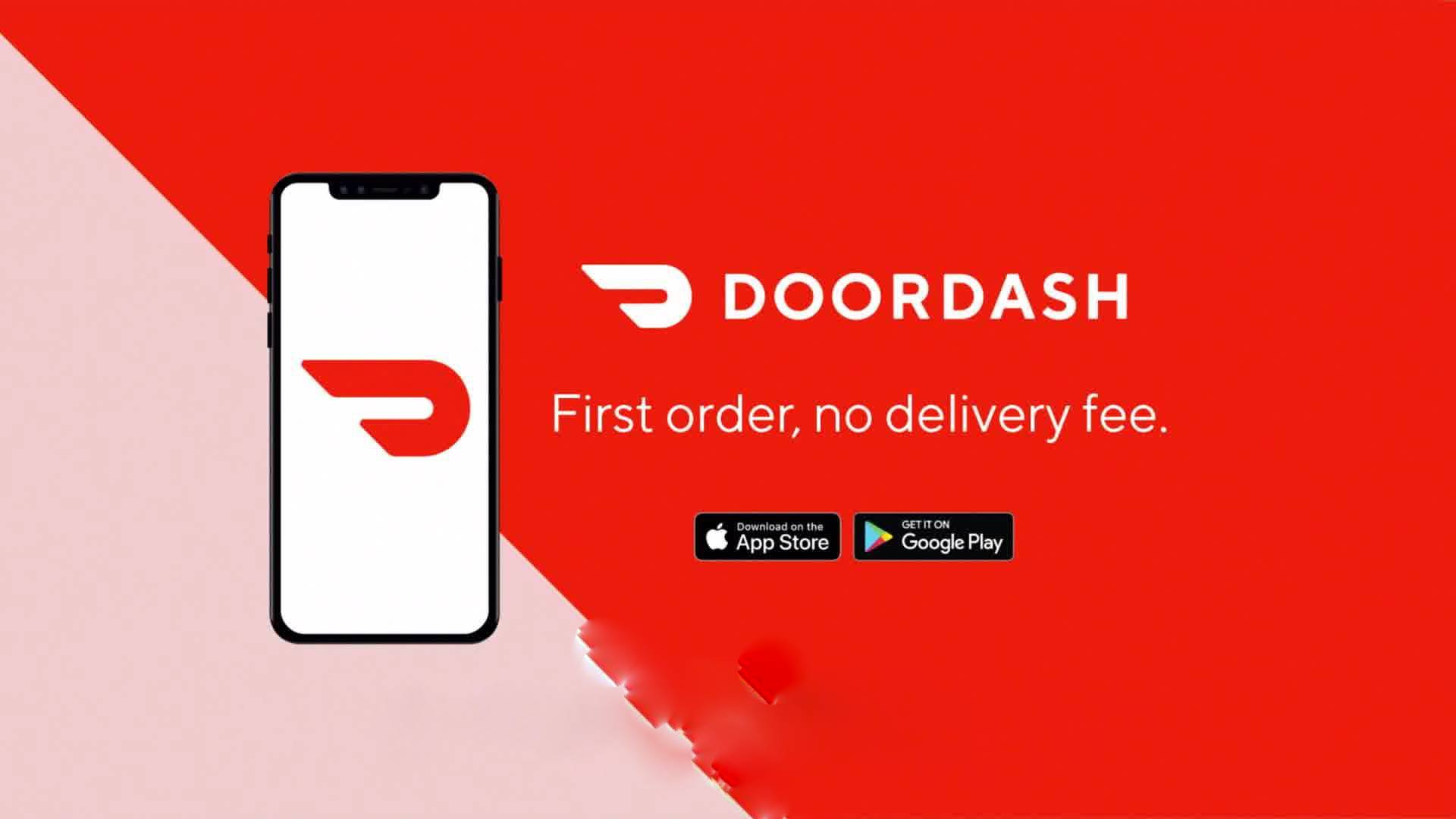
The DoorDash food delivery service has demonstrated an interesting practice of partnering with the corporate sector.
A special operator application called Coupon for DoorDash allows service partner companies to create gift coupons for receiving large discounts when ordering from an operator — up to 90%. Such legal entities also make mutual settlements with DoorDash on special conditions, which makes the financial side of the issue mutually beneficial for all program participants. The companies give away these coupons to their employees as gifts and bonuses.
All parties benefit from such cooperation. “Happy” customers redeem received coupons by placing orders in the DoorDash service for 10-20% off the retail price, their loyalty to employers grows, and the delivery service, after receiving data from new customers, can build relationships with them directly. Similarly, DoorDash has attracted many eminent companies and has grown strongly with new loyal consumers due to the b2b sector, with which , truth to be told, food delivery market operators still do not know how to effectively communicate.
Stable development
Charity
FoodKick delivery service serves only three boroughs of New York — Manhattan, Brooklyn and Queens. When ordering groceries, it gives its customers the opportunity to make a donation to NY Common Pantry, whose mission is to fight hunger and promote health and self-reliance in New York’s most vulnerable communities.
The operator’s charity program works through sister company FreshDirect, that’s targeting smaller brands that are hard to find in major delivery services such as Donut Plant and Baked by Melissa.
In addition to charity opportunity, frequent FreshDirect customers receive commercial benefits. For example, free unlimited deliveries via DeliveryPass with FreshDirect are only $ 2 per month, while a monthly DeliveryPass membership in FoodKick costs $ 9.99.
Food Waste Management Apps
Each year, one third of the world’s food is wasted. Food waste apps solve this problem and help save the planet by helping grocery stores and restaurants dispose of food leftovers and providing inexpensive groceries to those in need.
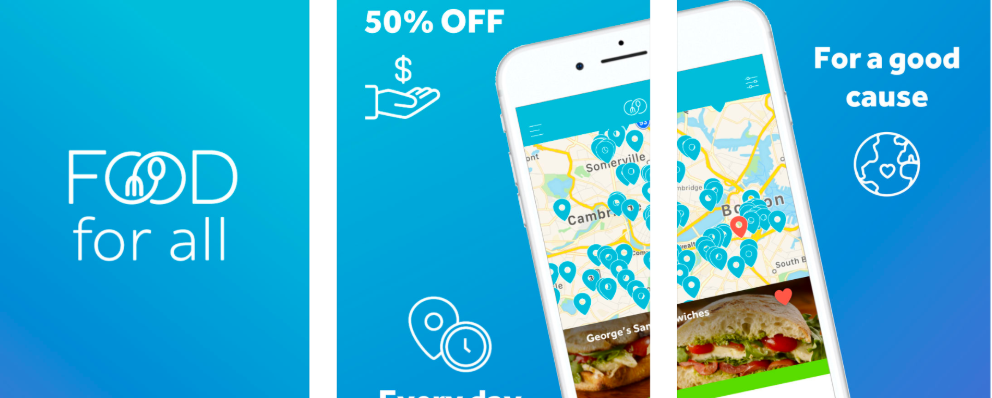
Food for All is one of such applications. This service offers unsold meals from local restaurants, cafes and deli with a 50% discount. Thus, anyone can have a delicious dinner for $3. You just need to place an order and pick it up at a certain time.
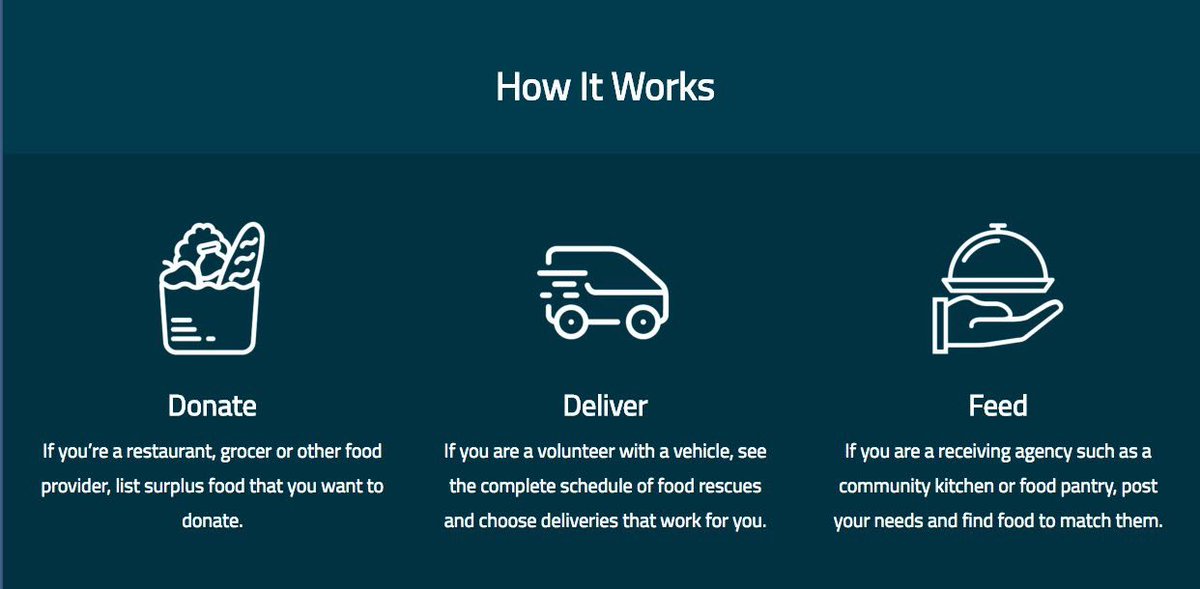
Another example is Food Rescue US. This volunteer-run platform is actively involved in food rescue movements. Food Rescue US seeks to end hunger across the country and provides more than 50 million food-insecure Americans with fresh, usable food from restaurants and grocery stores that have plenty of it.
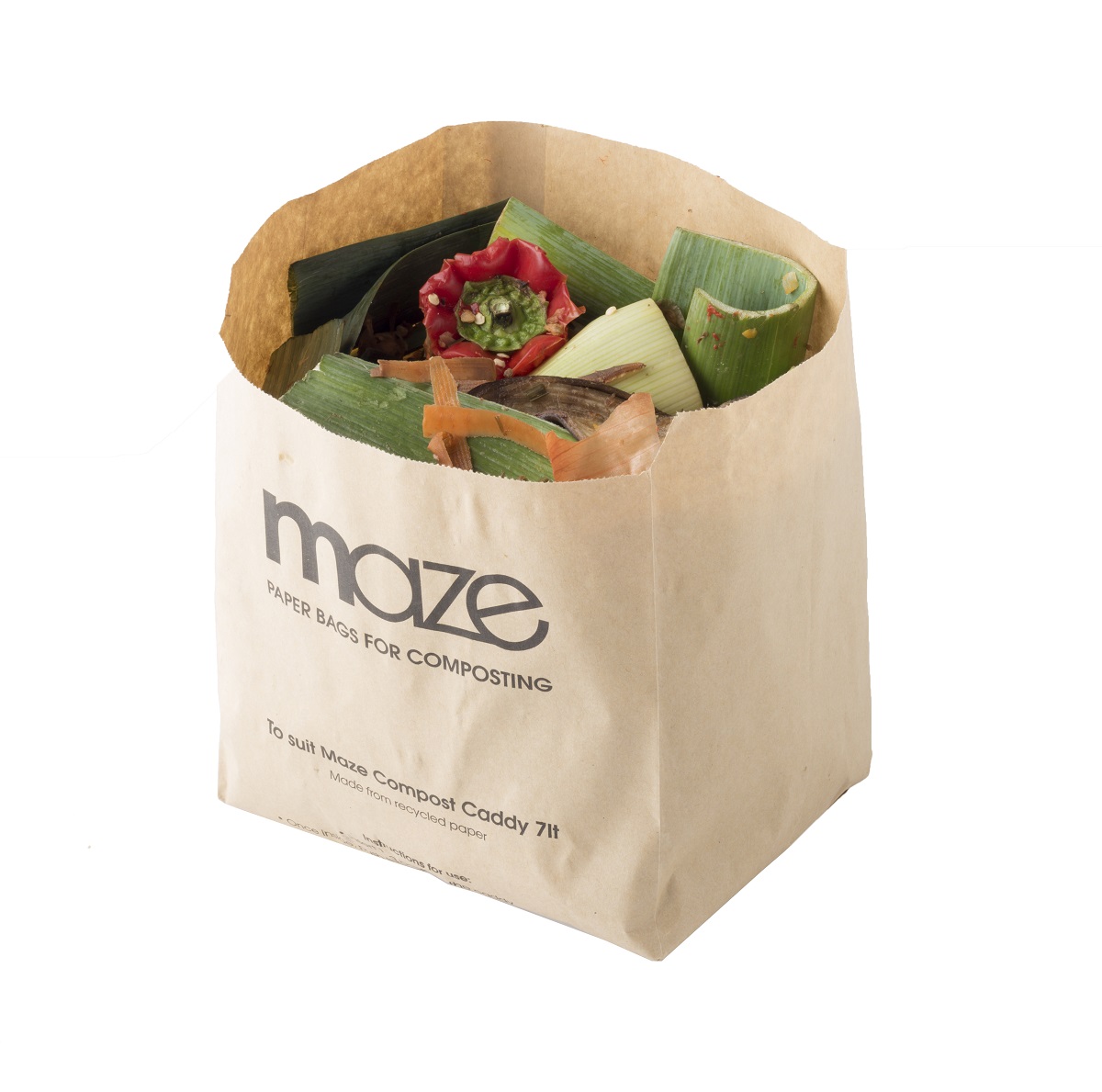
Maze manufactures biodegradable shipping bags that can be used for compost. Such a move will attract eco-activist clients and help save nature. It is also possible to sort products into reusable bags that do not require disposal.
WHOLE FOODS is famous for this kind of bags.
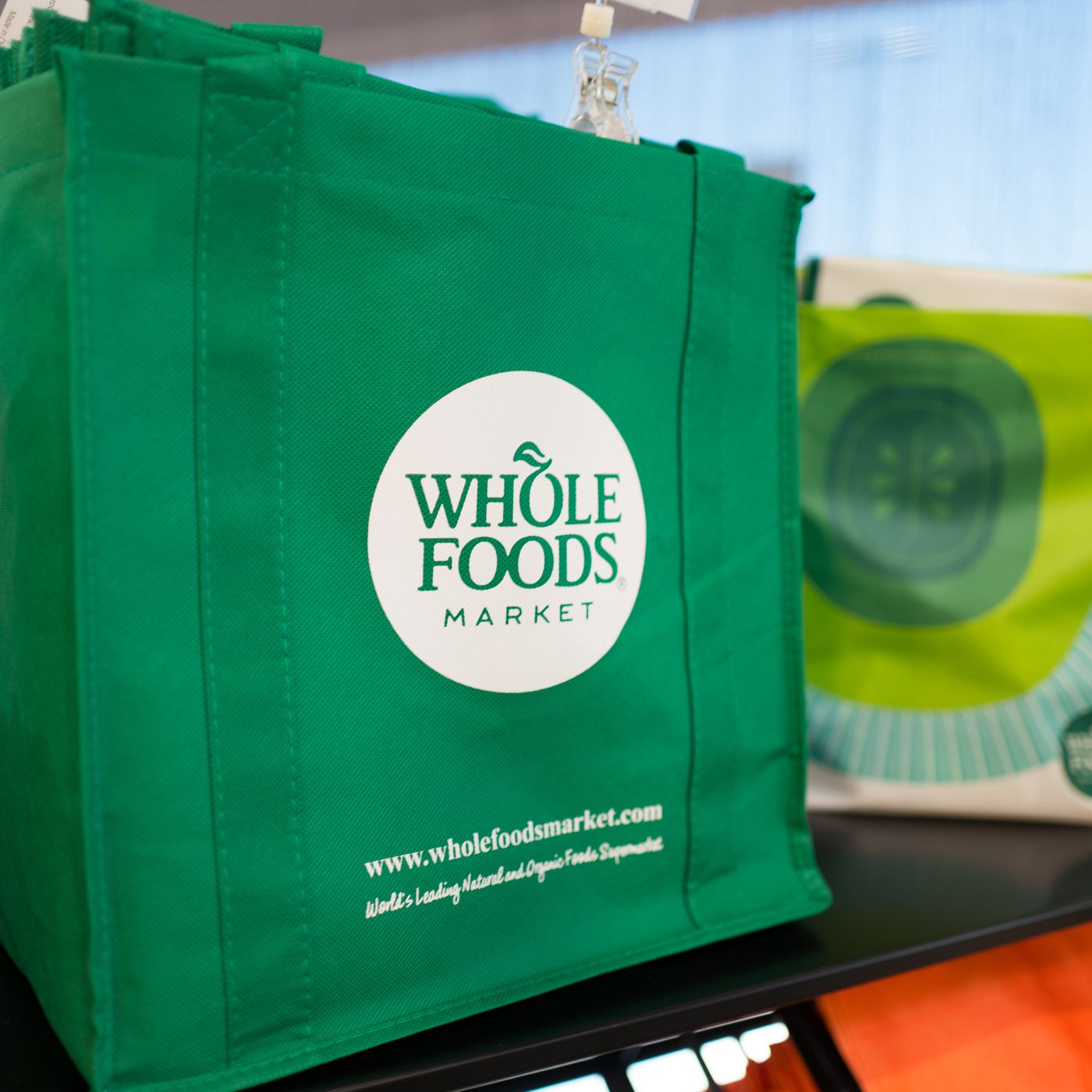
Customer Behavior
Customers using the new grocery and ready-to-eat ordering platforms have a different set of needs and expectations than the traditional pizza shopper.
McKinsey research has identified the following important features:
“Sticky” platforms. After customers sign up, 80% of them never or very rarely move to another platform, creating a strong winner-take-all dynamic in which the reward goes to the player who can sign up the majority of the customers in the shortest amount of time.
Time is of the essence. Delivery speed is the biggest variable in customer satisfaction, for 60% of the consumers across all markets citing it as a key factor.
Dining in. Most orders — 82% — are placed from home-based customers, and only 16% were placed in the workplace.
The number of orders increases on weekends. The highest volume days for online platforms were Friday, Saturday and Sunday, when 74% of orders were placed.
New Order Channels
63% of Americans refuse to order groceries and takeaways if they have a poor customer experience, and 55% of US adults want a simpler online ordering system. With this in mind, food delivery platforms should greatly simplify the ordering process and allow customers to place orders through all possible channels, such as social media, virtual assistants, messenger bots, SMS, smart devices, cars, etc.
- Tweet Order
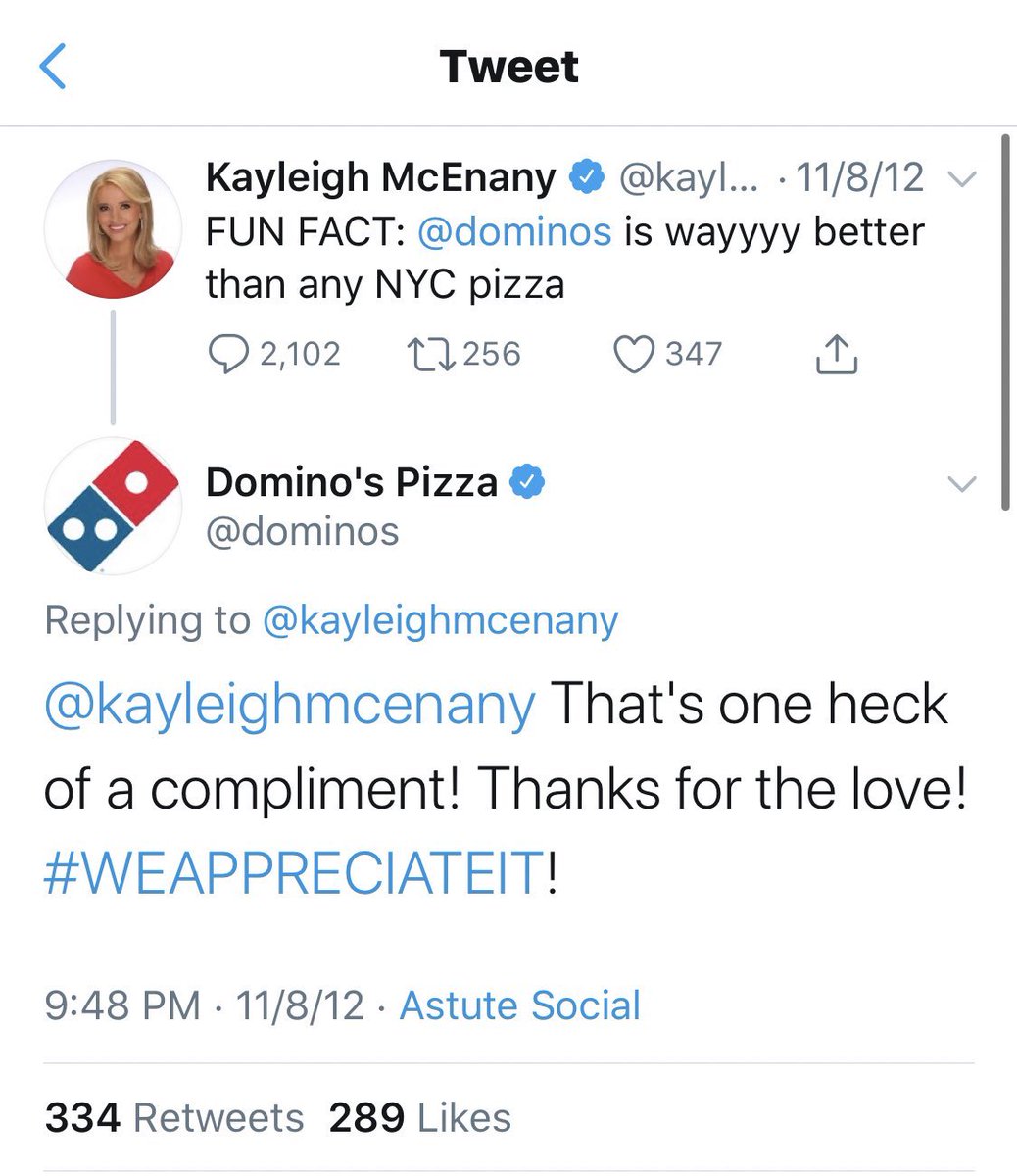
Domino’s Pizza was the first company to allow pizza ordering by simply sending pizza emoticons to the company’s Twitter account.
To use this service, consumers need to create their own “pizza profile” called “Simple Order” in the Domino online delivery service and save their default order there, and then link their Twitter account to their pizza profile. With this ordering feature, customers can request a pizza within five seconds, leaving a pizza emoji.
- Order Through Virtual Assistant
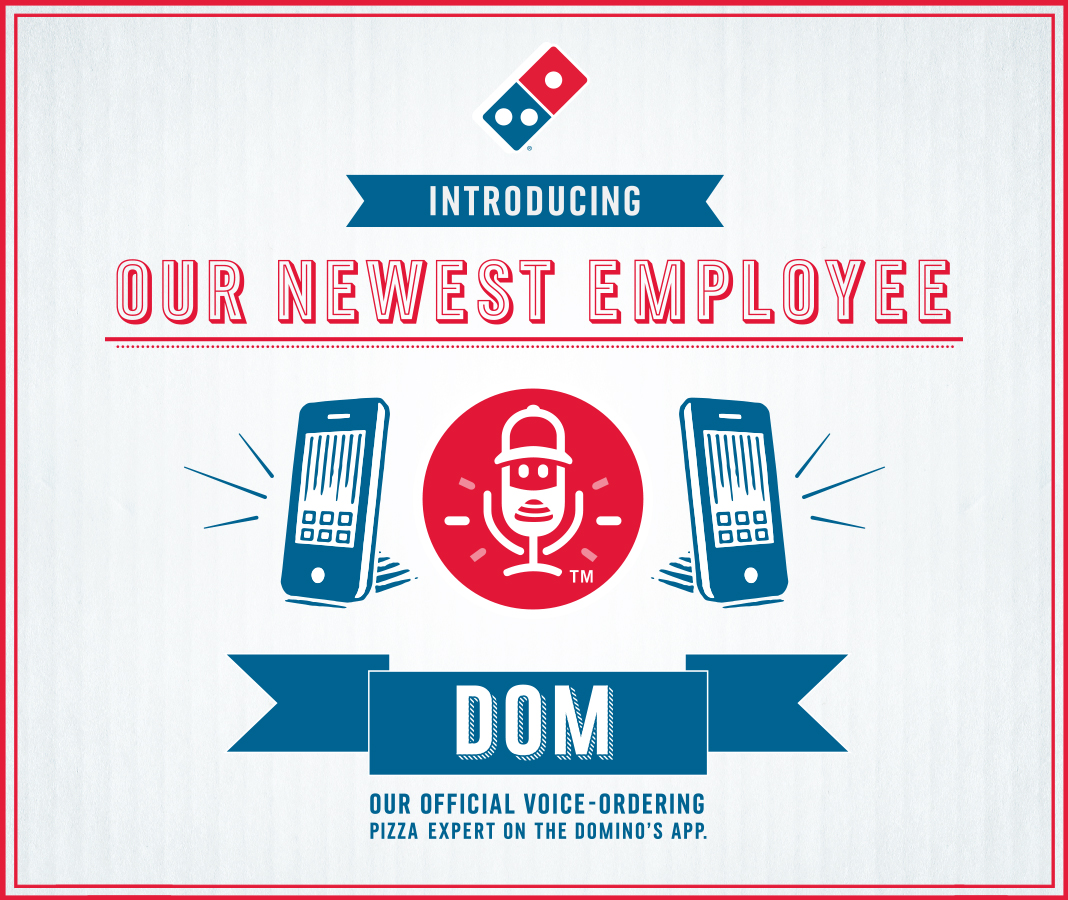
Domino’s didn’t stop at tweet orders. The company has created a Pizza bot for the Facebook messenger called Dom. Customers can now send Dom messages and order food with one word or using emojis. Dom also responds to customer inquiries for coupons and the latest offers.
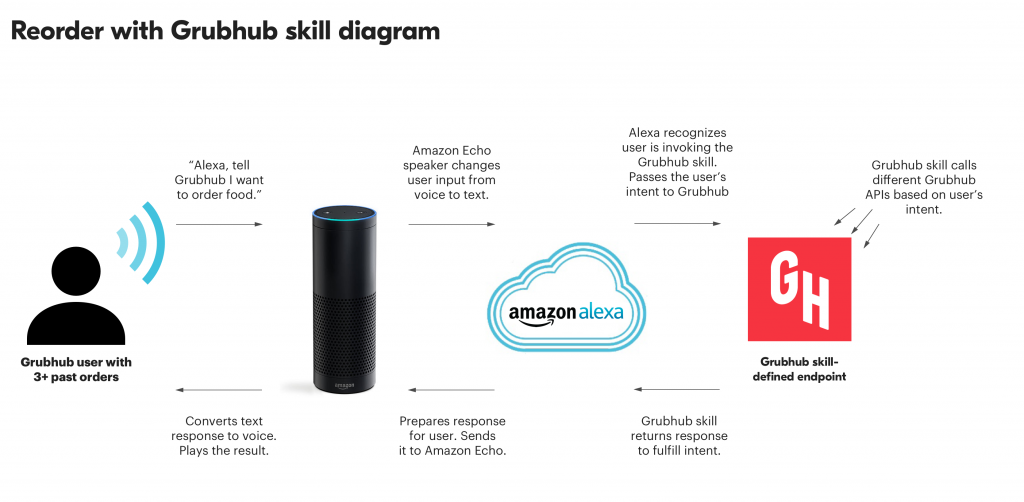
Grubhub is integrated with Alexa, Amazon’s virtual assistant. The new feature allows customers to re-order any of their last three purchases on Grubhub. When a customer tells Alexa what they want to order, Alexa places the order and announces the estimated delivery time.

Just Eat has also added Alexa voice skills to its app. Customers can now easily order food with voice, check courier’s location and change their orders.
- Smart Watch Order
Interest in smartwatches is growing. While the whole world was going through a crisis, due to the collapsed pandemic, the smart watch market was gaining momentum. In the first three months of 2020 alone, more than 230,000 smartwatches were sold, despite the fact that about 141 million smartwatches were sold in 2019. This is why many food delivery platforms are integrated with Android and Apple smart devices so that customers can order food right from the wrist in a few clicks. Domino’s was the first company to launch a smartwatch app for Android watch which greatly simplified the ordering process.
OrderUp also introduced its latest update to the Apple Watch, allowing customers to place orders, track shipping statuses, and see estimated arrival times.
4 Smart TV Order
Nowadays, customers can even order food directly from the TV while resting in bed and relaxing. At Papa John’s, ordering pizza is as fun and easy as streaming a movie. With Apple TV, you can browse all of Papa John’s menus, view past orders, and checkout with one touch. Papa John’s also offers exclusive discounts on Apple TV with every order.
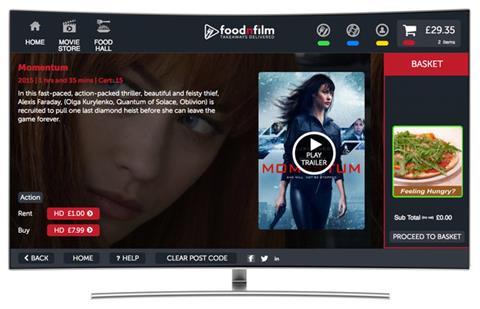
TVtakeaways, formerly foodnfilm, is directly integrated into Samsung Smart TV. The new take-away service is available on all Samsung Smart TVs sold in the UK since 2012, allowing users to order popular take-out and supermarket food on a big screen.
5 Order From a Car
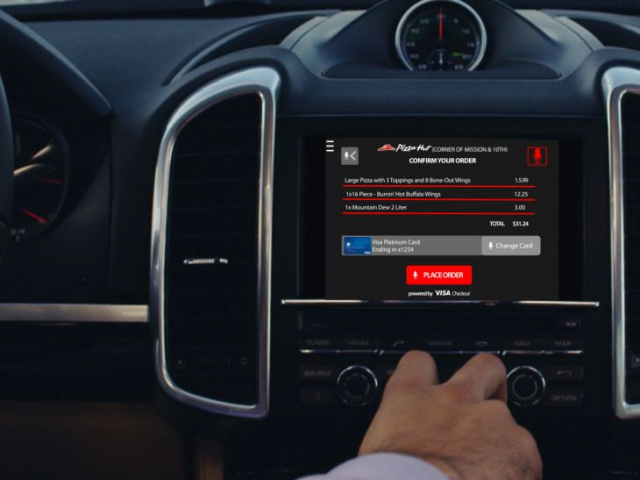
A car is another smart device that can help you place an order. Pizza Hut partnered with Accenture and Visa to create an in-car pizza ordering system that allows drivers to buy food on the go. Visa Checkout is integrated into the car dashboard, so customers can order food with voice without taking their hands off the wheel.
6 Order With a Blink of An Eye 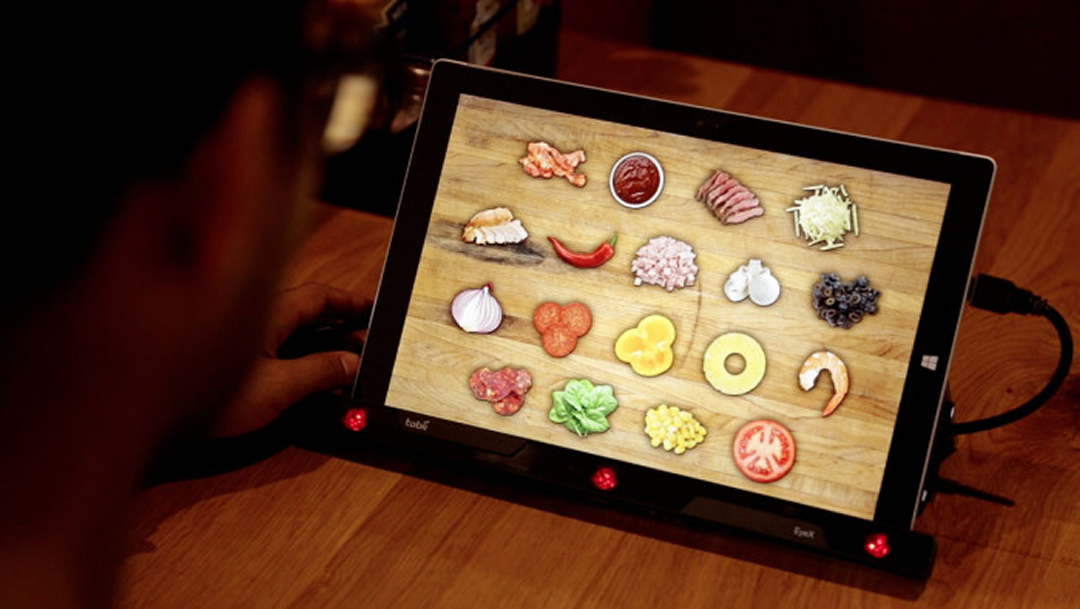
Pizza Hut has created another way to shock its customers. The company launched Digital Menu, an advanced digital ordering system that “reads minds” of customers. The eye-ordering system is built on eye tracking technology from Tobi Technology.
The digital menu collects eye movement data, detects customers’ eyes focus, and offers the best pizza deals out of 4,896 possible combinations in just 2.5 seconds. This is not science fiction. Digital technologies have a huge impact on delivery services.
New Delivery Formats
- Self pick-up service
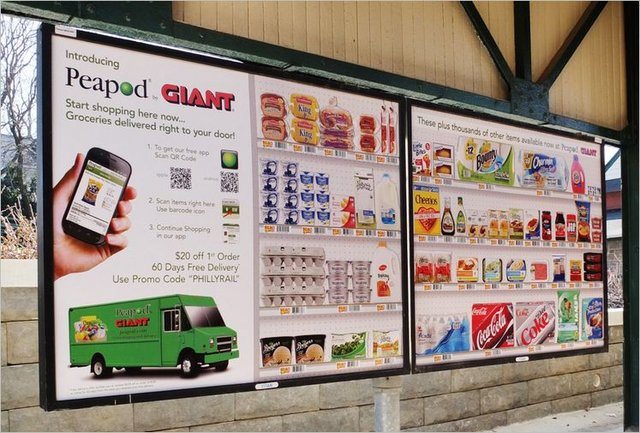
Peapod food delivery service currently only serves large areas near subway. To get the minimum shipping fee, you need to place an order of $100, but the service offers to make your order through the application or on the website, and then pick it up for free from one of their pick-up points.
One of the leaders in the product ordering segment, Walmart, plans to make the pick-up system available to 80% of the US population by the end of 2021.
- Planned Delivery
In addition, Peapod offers special discounts up to $5 during specific two-hour delivery intervals throughout the week. If you are flexible with receiving time, it is worth using this function, which allows you to plan delivery up to two weeks in advance.
This allows you to save money when ordering products, as “hold orders” are often subject to special price offers. Order planning is important for delivery service operators, so they try to set specific pricing for the customer category to help them plan their supply chains over time.
- Delivery Subscription
With the ability to analyze big data, shipping companies quickly became convinced that the average American’s monthly grocery basket was almost 90% unchanged. Why not offer these consumers a subscription-based set of products that they are used to on a regular basis?
Back in late 2019, the American retail chain Walmart introduced a subscription for the delivery of groceries from its stores. The cost of unlimited delivery of groceries on the same day is $98 per year or $12.9 per month.
For the first 15 days, the grocery unlimited will work for free. To make this order format easy to evaluate, customers will be able to opt out of the service after the trial period ends.
Other operators have similar subscription programs. For example, Instacart grocery delivery service, which provides delivery in partnership with grocery store chains, can “unlock” free, no service charge shipping and reduced service and shipping fees by paying an annual $35 Instacart Express membership fee. Regular Instacart users will be able to get the most out of each of their orders.
Shipt’s grocery delivery service operates as a club membership and partners with grocery chains to offer delivery from a variety of stores in the eastern United States. The cheapest membership option costs about $8 per month with an annual billing of $99. For example, grocery delivery from Target is available exclusively through Shipt.
Subscription products also help motivate ready-to-eat consumers to try a new cuisine. To make this possible, players regularly run promotions that encourage consumers to look for trendy vegan sets, paleo or ethical products, resulting in continued growth in specialty food subscriptions.
While this is still a very niche business, there are also numerous projects for getting a food subscription kit such as Blue Apron, Hello Fresh, and Plated. About a quarter of the people who buy them are a distinct convenience-oriented demographic that sets the tone for this sub-segment.
- Crypto-order
The development of blockchain technology has led to the emergence of a new niche in the service industry: cryptocurrency food orders. Customers around the world can order any takeaway or delivery for cryptocurrency. For example, PizzaForCoins accepts over 50 cryptocurrencies.
Food delivery companies that support crypto payments include Feastly, Takeaway.com, Papa John’s Pizza, Levy Restaurants, and Lobster Gram.
Using cryptocurrency for ordering, companies can eliminate fraudulent activities and improve the overall food order experience. Customers are not limited to a specific payment option and can pay for their orders even with relatively unknown cryptocurrencies.
Even if cryptocurrencies is only a small fraction of payments, such an opportunity itself will create an additional wow effect and will work as additional advertising, revealing wide opportunities.
Instacart
Lose Weight with Instacart TV show
The idea of the TV show is that the main character orders food using the Instacart app, where the calorie content of each product or dish and grams are indicated.
The results were broadcast on one of the most important TV channels in the United States in the Good Morning America! TV show.
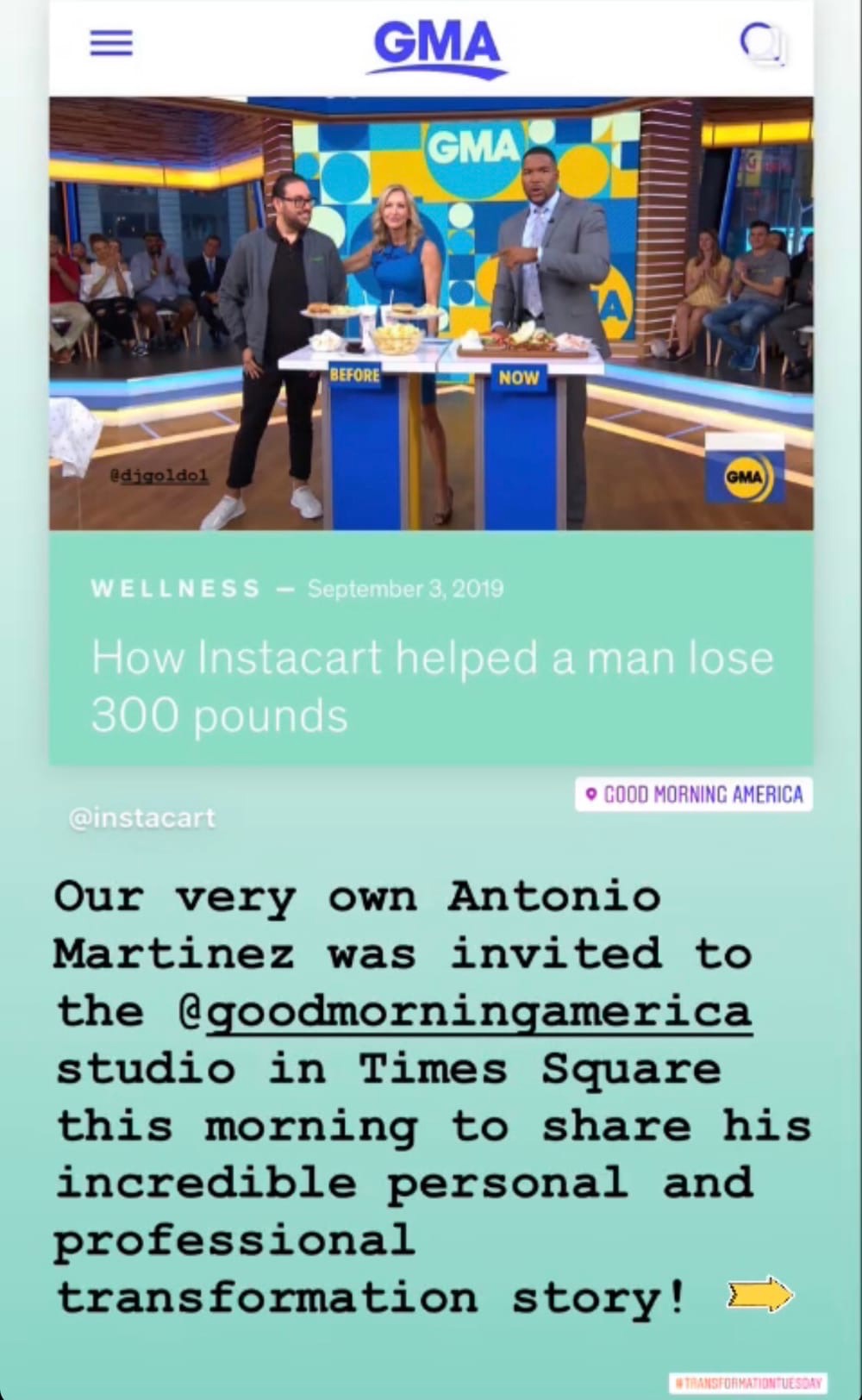 Collaborations with Payment Systems
Collaborations with Payment Systems
Instacart offered a discount system for orders when using online payment:
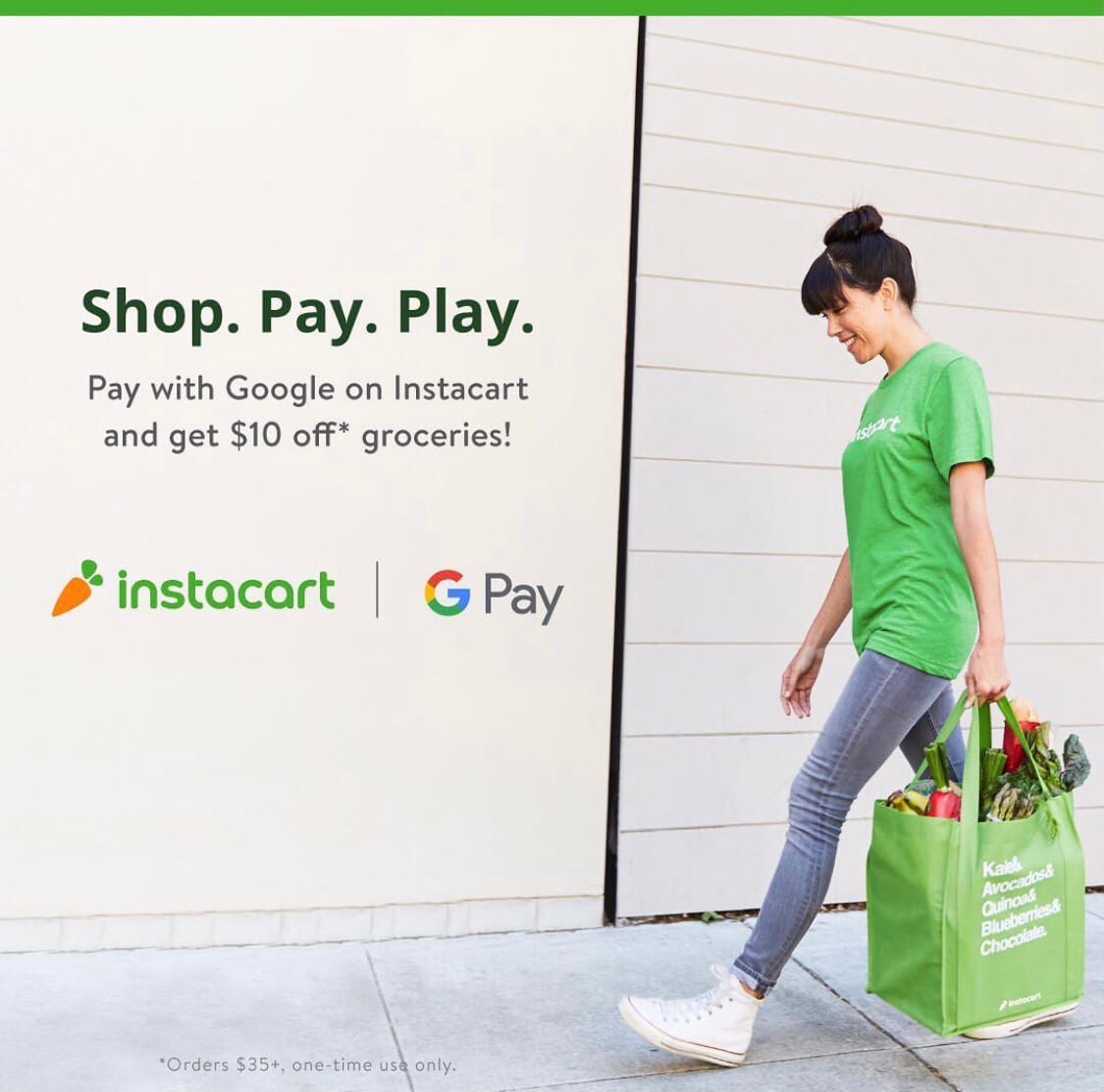 Charity
Charity
Instacart supports low-income areas in the United States. Buyers could form a «help» basket that would be brought to large families or people without housing. The program was supported by the famous tennis player Serena Williams, who donated 50,000 food packages.
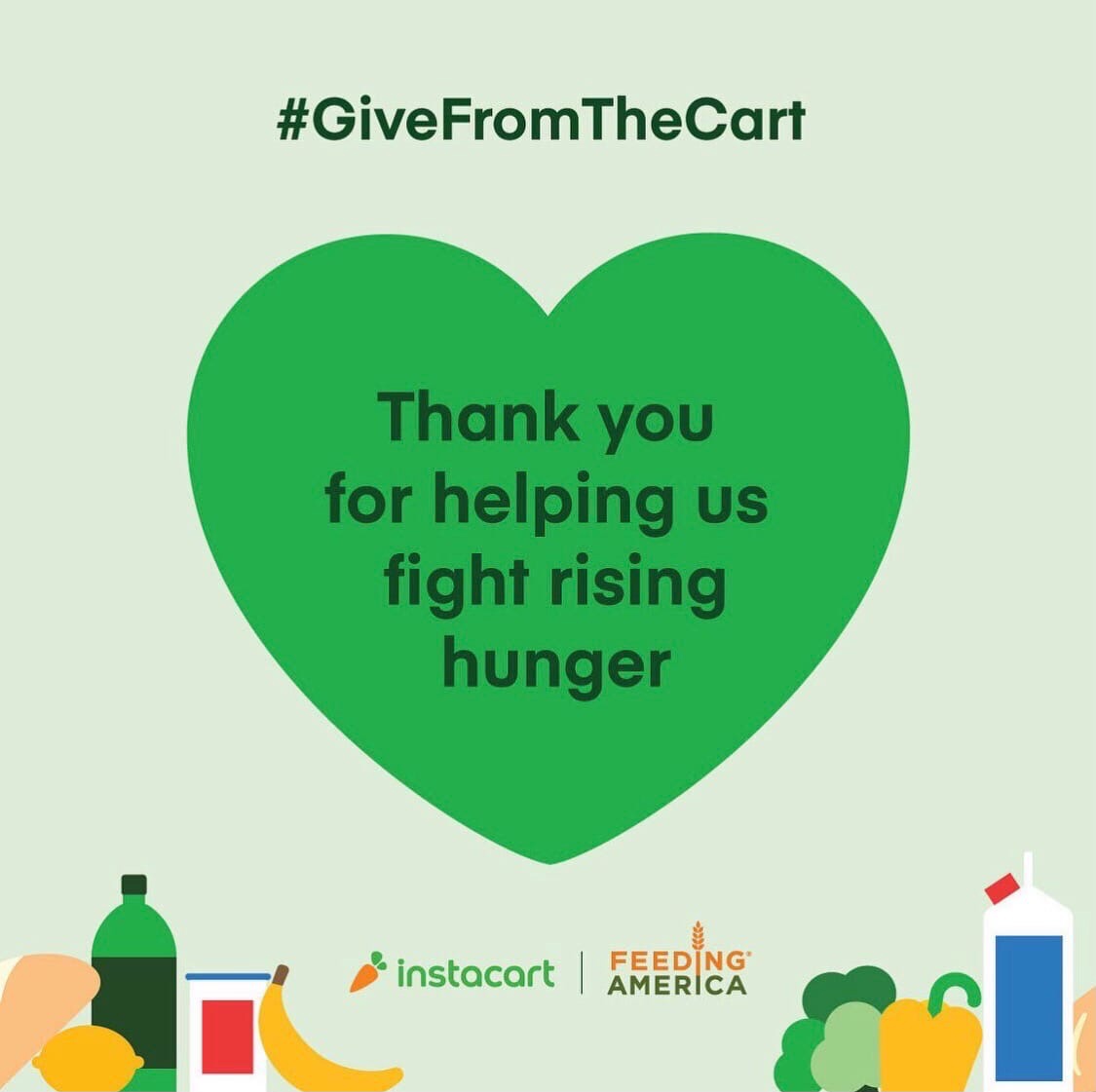 Instacart Beets
Instacart Beets
The company has created a Spotify shopping playlist that you can listen to for free. This project was attended by Steve Aoki, DJ Jazzy Jeff, and others.
 Collaboration with Other Brands
Collaboration with Other Brands
Instacart began delivering well-known brands of cosmetics, medicines, hot coffee, Subway sandwiches.
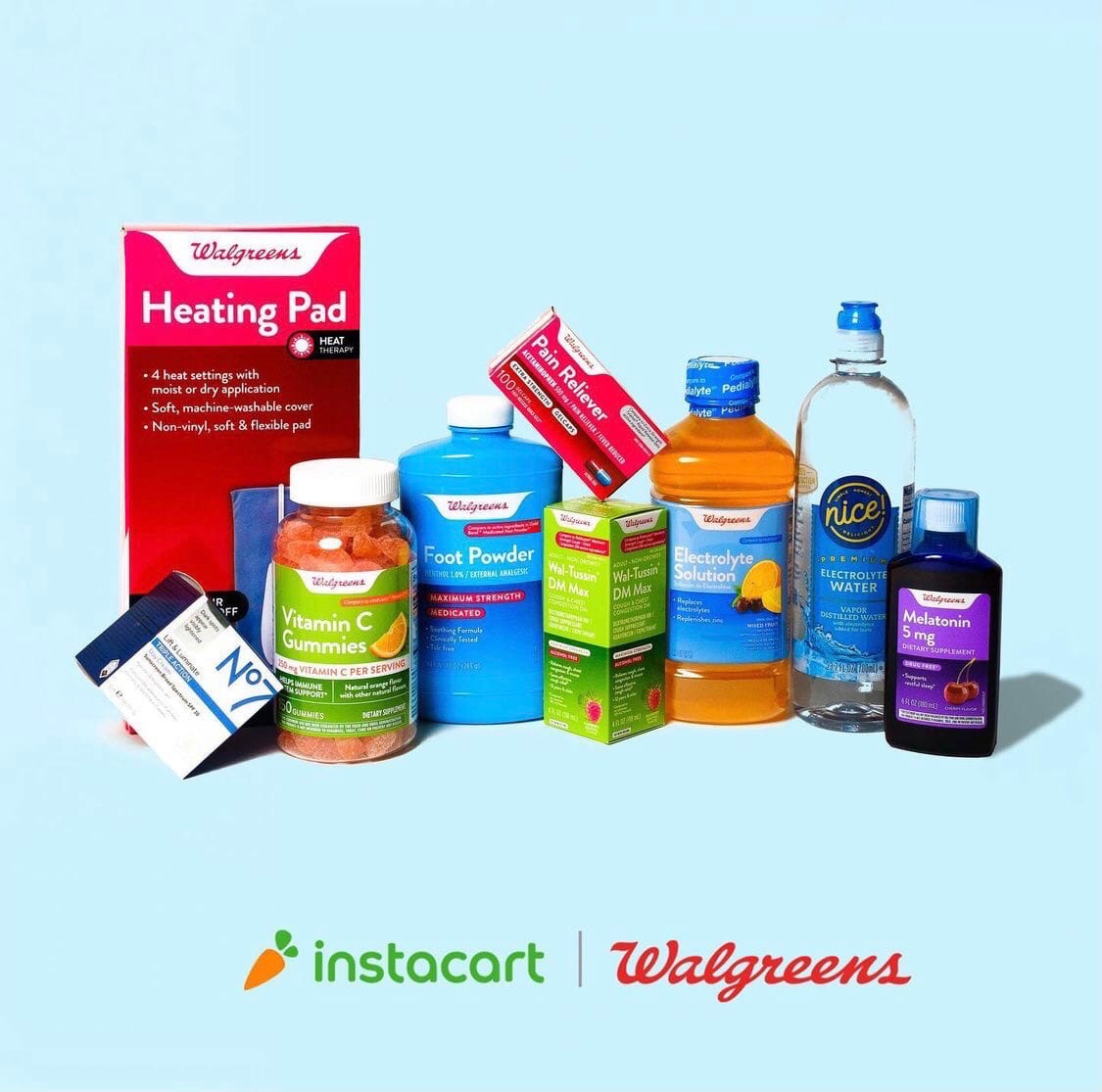 Online Coaching
Online Coaching
Instacart often gives web lectures on sales: how to generate customer interest. Also for customers: what should be in the grocery basket and how to store purchases correctly.
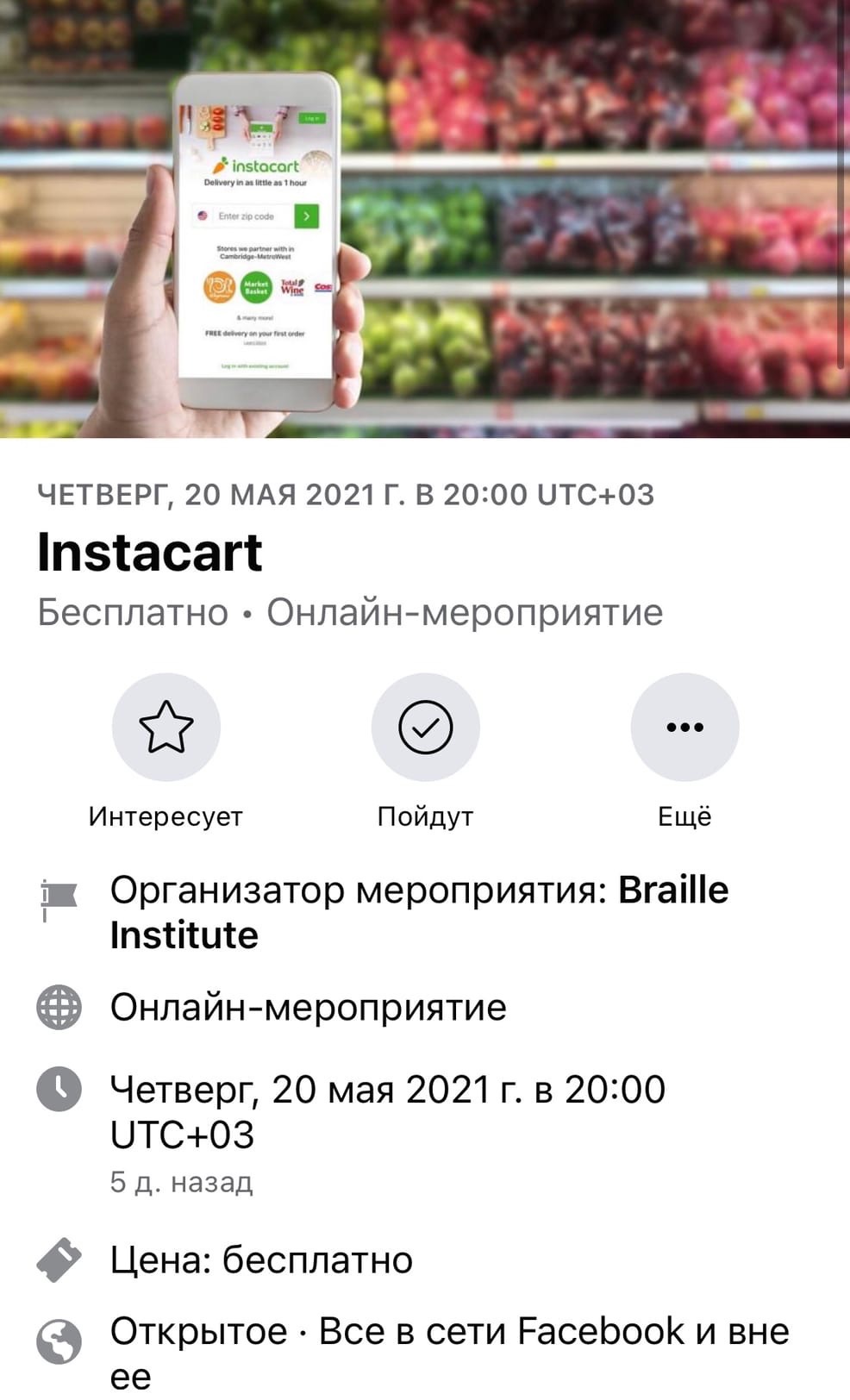 Food Fair
Food Fair
Instacart ran a Food Fair campaign, where all suppliers gave the opportunity to taste products and purchase fresh products at a big discount.
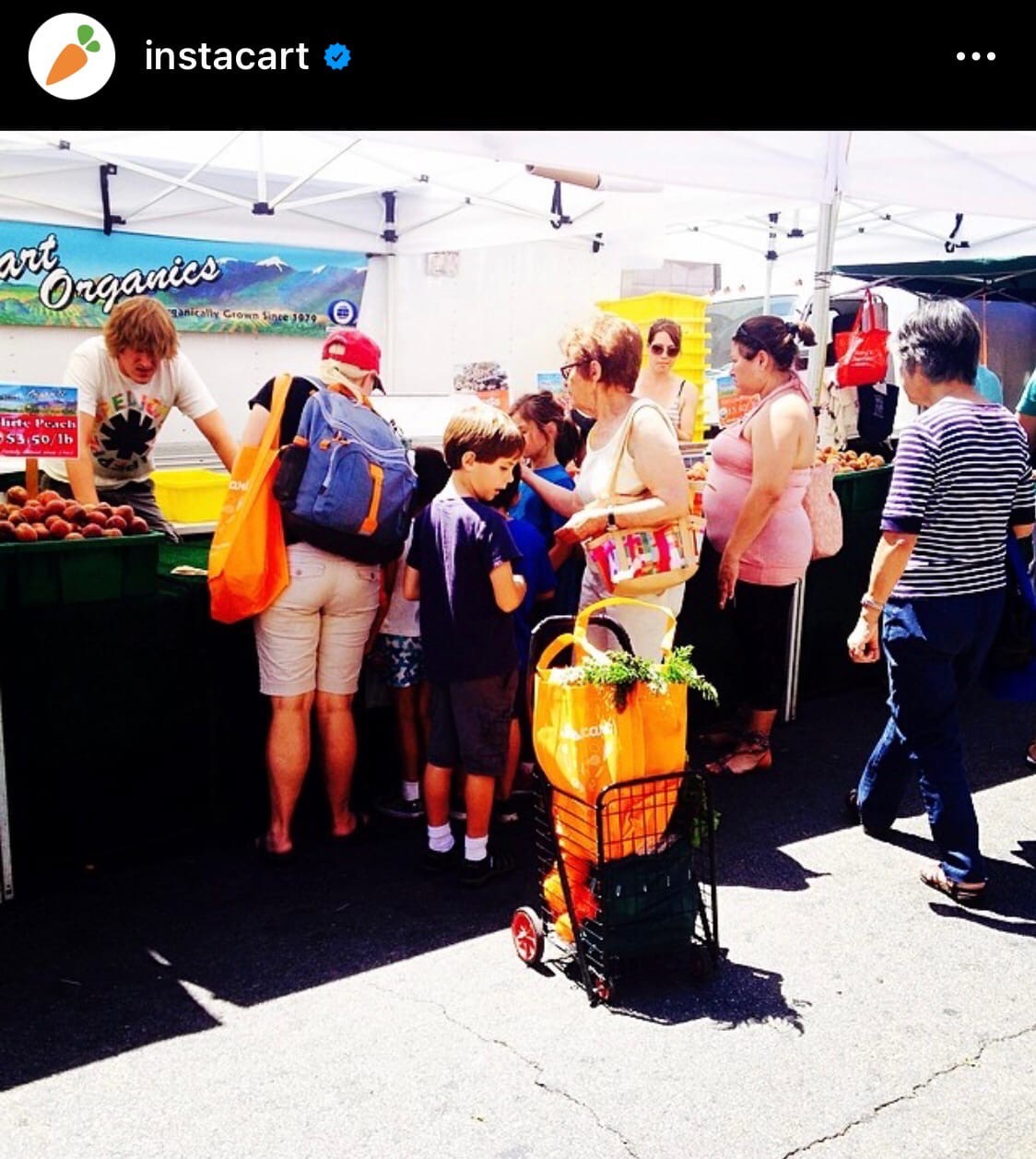 Best Dad Promotion
Best Dad Promotion
On Father’s Day, the company offered clients to take a family photo of a father holding his child in his arms. The photo had to be posted on Instagram, having Instacart tagged on it and a hashtag.
The winner received an annual grocery basket for free.
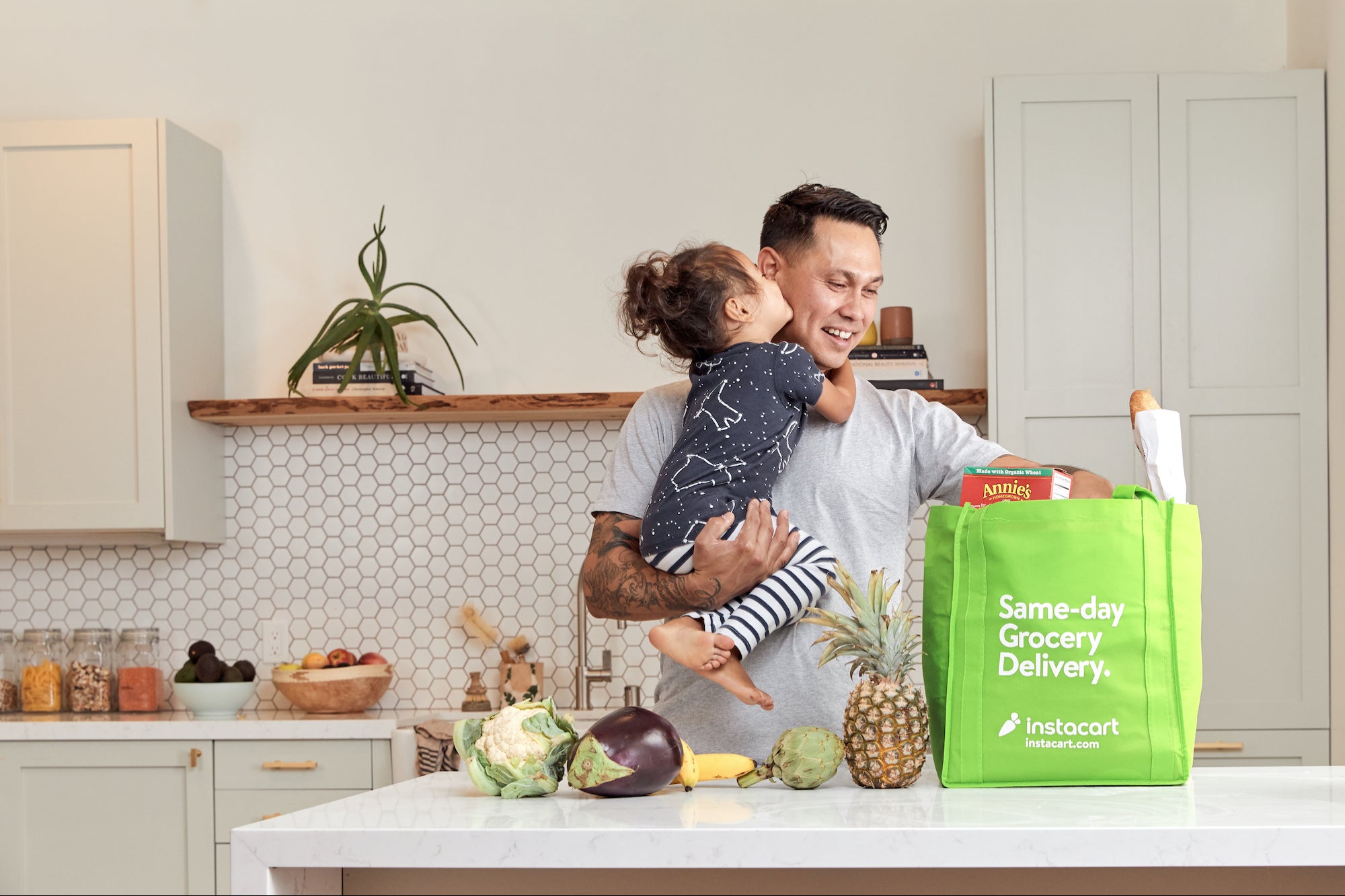
Fridge No More
FlyerS
FridgeNoMo left the flyers in the mailboxes in the areas of their service.
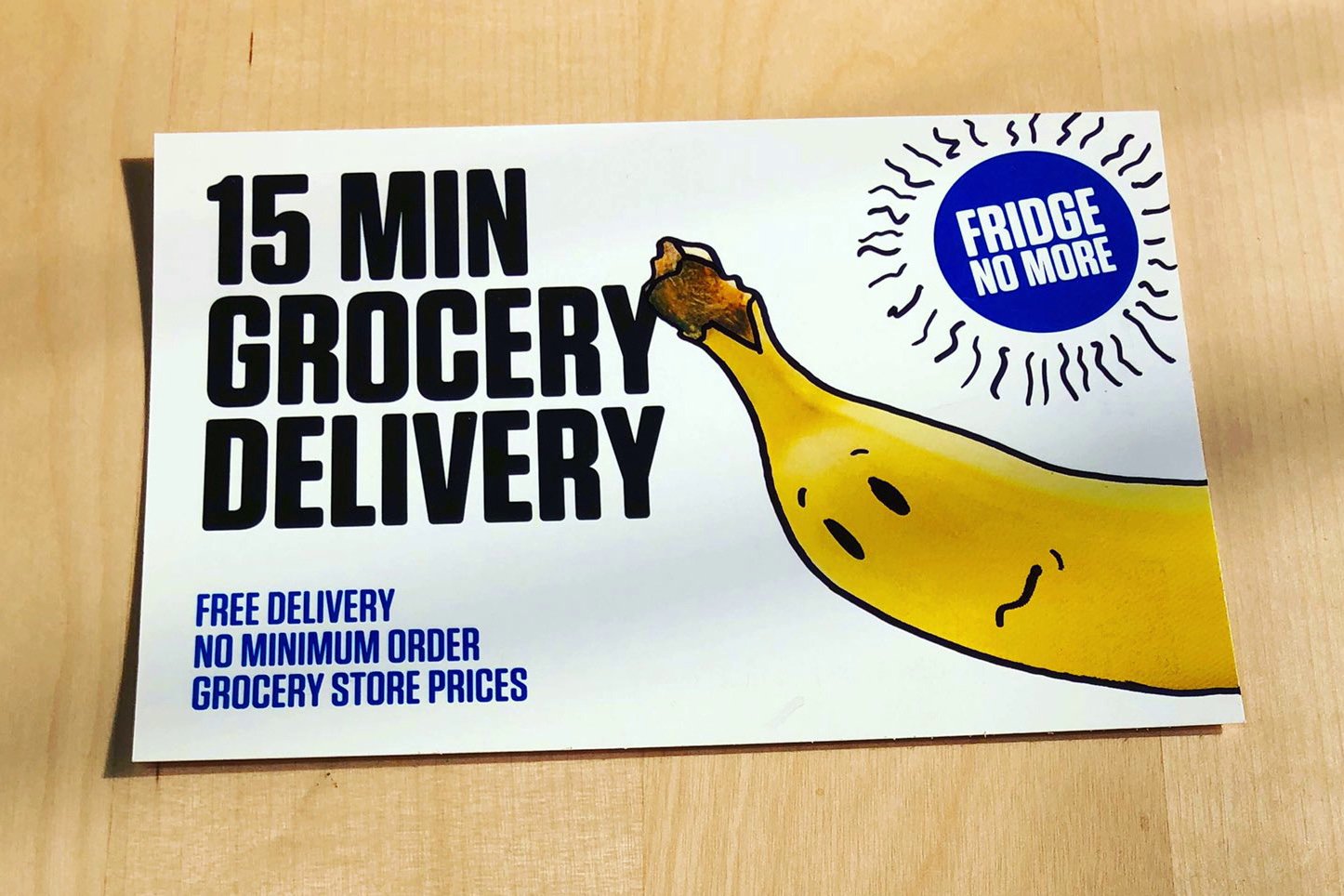 Traveling Ads
Traveling Ads
Fridge No More placed LED advertisements on trucks moving around Manhattan’s suburban neighborhoods, attracting potential buyers.
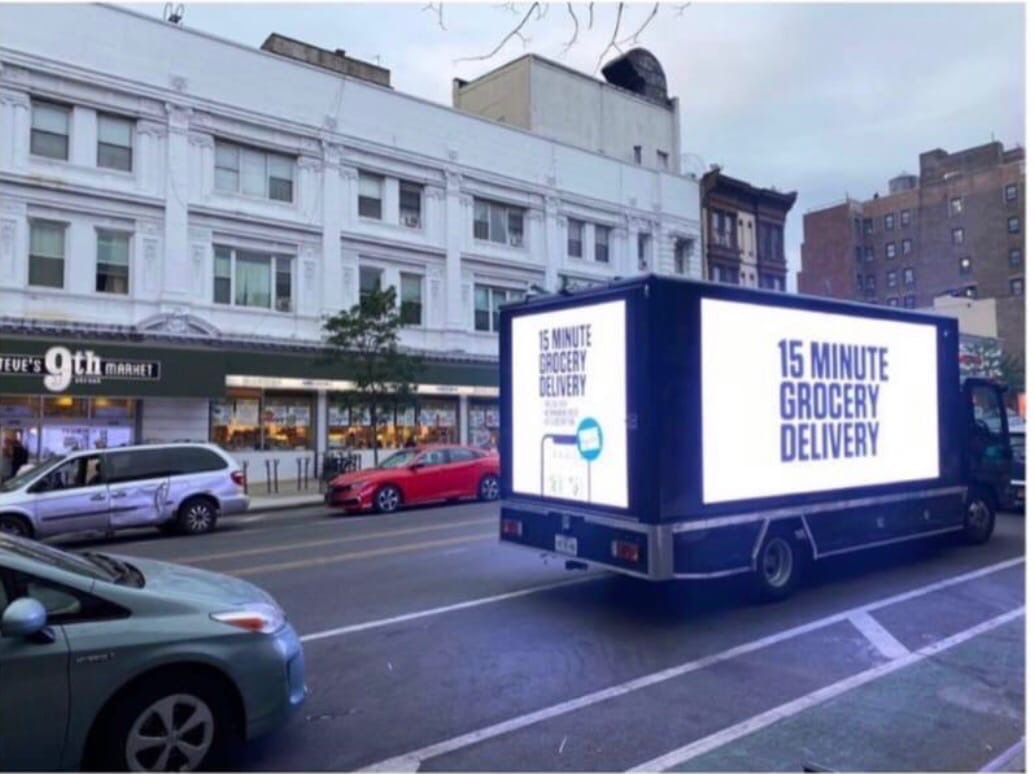 Subway Ads
Subway Ads
Fridge No More also decided to place their ad in the most «streaming» place — the subway.
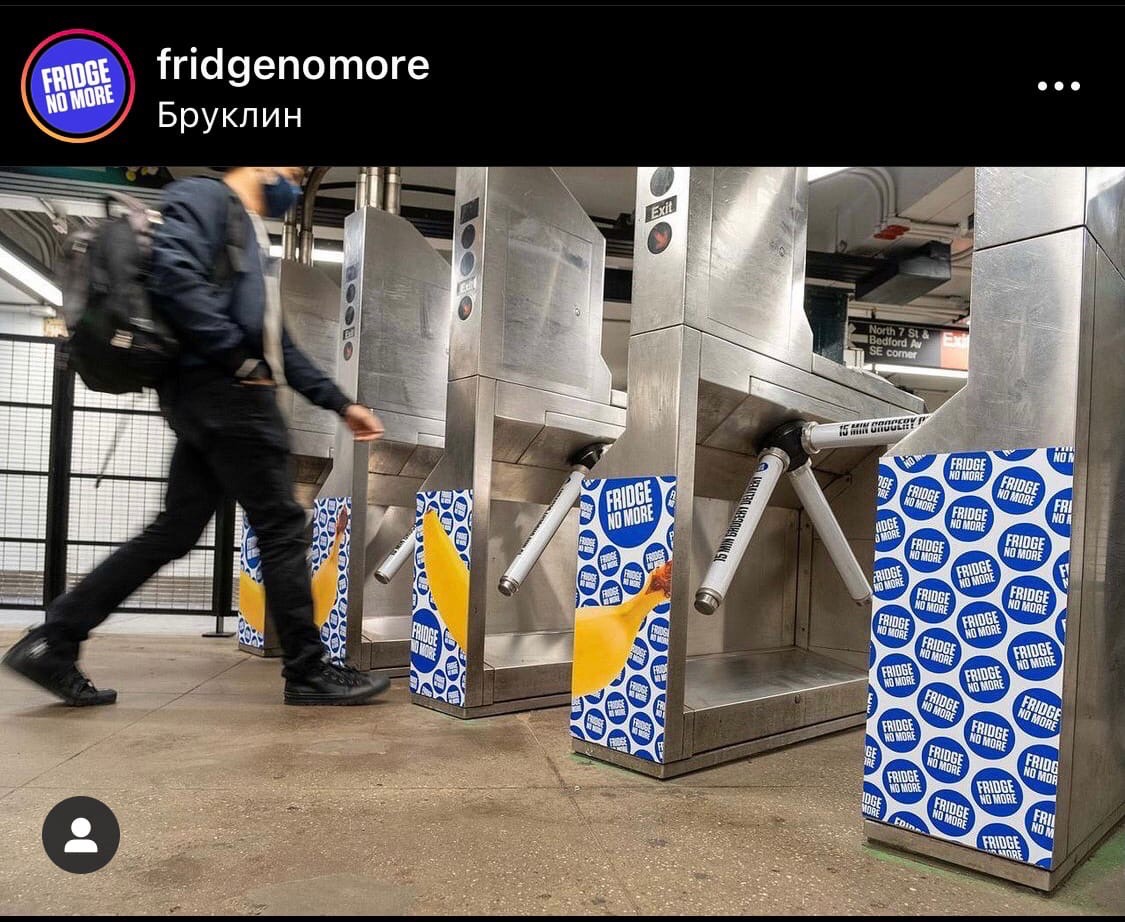 Discount Cards Draw
Discount Cards Draw
363 Bond ST is an account with recipes that invited subscribers to share a recipe for their favorite dish on Instagram and tag 363 Bond ST and Fridge No More. The “chefs” of the selected recipes won $50 for purchases online.